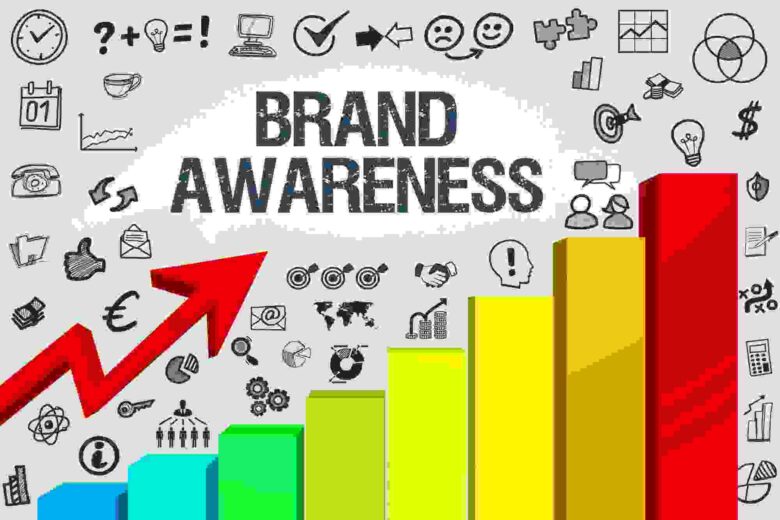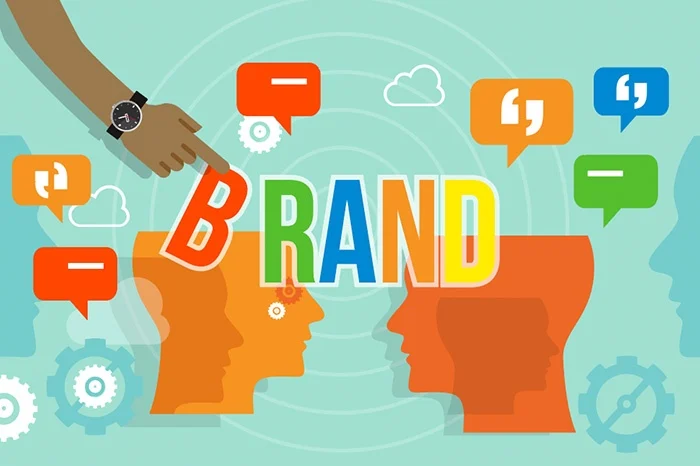In the past, brands could rely on a consistent message shared through a few popular channels. Nowadays, however, the game has changed. Brand mascots now engage in make-believe romances, sponsored dance challenges, and even internet feuds… all centered around, ironically, chicken sandwiches.
Creating a distinct label image requires taking bold leaps, but it’s important to start with the basics. To help improve brand awareness, we’ve put together a list of everything you need to know.
What is Brand Awareness?

Source: marketingandadvertisingdesigngroup.com
Brand awareness refers to the degree to which audiences are familiar with the identity of a brand and its products or services. It serves as the foundation of the sales funnel. Recognizing a brand is crucial in establishing trust and making a purchase.
A strong level of brand awareness provides a competitive advantage by ensuring that a business remains at the forefront of consumers’ minds. Companies with a high level of recognition among consumers can even become synonymous with their product offerings. For instance, when individuals need to correct a permanent writing mistake, they often specifically ask for Wite-Out instead of a generic correction fluid.
How to Measure It?
1. Website Traffic

Source: eternitymarketing.com
When tracking month-over-month variances in web traffic, it’s important to note that it doesn’t provide an exact measurement of business awareness. Nevertheless, connecting web traffic to ROI makes it a preferred reporting metric among management.
To gauge the impact of new brand awareness tactics, one can utilize Google Analytics to monitor the growth in new users. This will provide a rough estimate of how these efforts translate to site traffic.
2. Brand Surveys
Surveys evaluate how an audience perceives and feels about a product or service. The data collected from surveys can help track brand perception over time and provide businesses with valuable insights to shape their image in a positive direction.
Regrettably, designing and distributing these surveys can be a time-consuming process, often lasting for several weeks or even months. To obtain more timely data, it is recommended to complement a survey with the following alternative options.
3. Social Network Analysis

By utilizing Sprout’s social listening tool, users gain access to a wide range of metrics that provide valuable insights into how conversations are evolving around their brand:
– The total message volume metric tracks the overall number of messages circulating about the label.
– The sentiment summary metric offers an assessment of people’s attitudes toward the product, indicating whether the sentiment is trending positively or otherwise.
– The share of voice metric allows users to compare their brand’s market share on social media against that of its top competitors.
How to Build Brand Awareness?

Source: suttle-straus.com
1. Social Media Marketing
Social media marketing should not be overlooked when it comes to building brand awareness. With an ever-growing number of active users and the emergence of new platforms, social media provides an excellent opportunity to quickly make your label known to the right audience.
Attempting to establish a presence on every social media platform would be impractical, so it’s advisable to focus on one or two where a substantial portion of your target audience congregates. By creating content that directly resonates with your audience, you can effectively spread awareness about your product.
2. Freemium Offers
Potential customers can now experience a preview of premium and enterprise solutions or products. The freemium offers provide interested prospects with an opportunity to try before making a purchase. By incorporating a credit to your product for the freemium offer, your brand gains visibility among new audiences who may opt for your premium or enterprise offerings.
3. Referral Programs

Source: techwireasia.com
Advancements in digital technology and advertising have revolutionized the landscape of word-of-mouth marketing. When satisfied customers become brand advocates, sharing the positive aspects of your business, products, and services, they harness the influence of social proof to your advantage.
By implementing referral programs, businesses enable their customers to endorse their offerings within their social circles, in exchange for a reward. These programs not only boost compay awareness authentically but also drive sales, leading to long-term business growth.
For business improvement, you need as many people as possible to know about your referral program. One way to achieve the goal is to notify popular sites that work with referrals about it. You can also send your offers to other companies, shops, etc. using online faxing. Try the view website of the application, perhaps this is the small link that will start the whole mechanism. With the fax app, you can also organize your internal communication and improve your document flow.
4. Fine-Tune Your Profiles
Recognition plays a pivotal role in establishing business awareness. When individuals glance at social profiles, they should grasp the fundamental aspects of the product, including its purpose and personality. The setup of profiles, from social bios to profile images, significantly influences whether people can identify the label. For instance, take a look at how Hinge has structured their Twitter profile. Brands have only a few seconds to capture attention and convey a concise story. By utilizing the cover photo as an opportunity to reinforce their purpose and tagline, Hinge effectively communicates their message.
5. Podcasts
By leveraging podcasts, individuals can enhance brand awareness and establish themselves as industry thought leaders. By inviting experts to share their insights on business podcasts, valuable connections can be forged. Collaborating with other professionals on diverse content also exposes the trademark to new audiences. By offering valuable and actionable content, the audience gains value, while the brand reaps the benefits of increased exposure.
6. Harness the power of hashtags

Source: hospitalitynet.org
Hashtags may still be effective, contrary to some opinions. According to 72% of the LinkedIn community, they continue to play a valuable role. Occasionally, there are claims that hashtags are becoming obsolete, but rest assured, fellow marketers, the hashtag is alive and thriving. By selecting relevant hashtags you can significantly boost the visibility of your posts. When deciding which hashtags to use, it is important to consider the platform you are posting on and the current trends driving conversations. For instance, take a look at Heinz’s Halloween-themed TikTok.
Conclusion
Building brand awareness is not an overnight process and requires commitment, creativity, and strategic planning. Experiment with the six strategies mentioned to build an effective awareness campaign for your business. Ultimately, the goal should be to create a solid foundation of familiarity among consumers that can propel long-term growth. Good luck!




